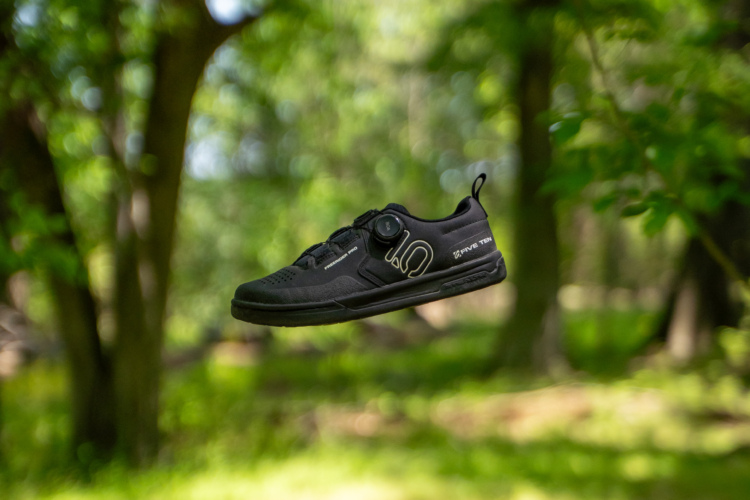
The Quick Question series answers your MTB repair questions. Do you have a quick question about mountain bike repair? 🤔 Email [email protected] and we’ll do our best to answer it!
This week’s reader query is fairly straightforward, though the answer is not. An anonymous reader asked, “how do I know when to replace my mountain bike tires?” Depending on where you live and what tread you prefer, quality tires can cost as much as $100. In addition to the expense, nobody wants to be wasteful with their bike purchases. Please let us know what the tire wear limit is for your riding style, tread, trails, and budget.
The simplest way to think about swapping tires is to change them out once they offer less traction than you want. In a recent video about Cushcore installation tips, EWS racer Jesse Melamed talks about how he likes to keep relatively sharp tread on the bike because riding with less grip forces him to ride slower, and the transition back to speed with new tires takes time. He can consistently train faster with fresher rubber, and that high-speed training is worth the work. Alternatively, Josh “Ratboy” Bryceland was known for racing multiple enduro weekends on the same tires, often rolling to the start line with a rear tire that looked like a shark gnawed at it for sustenance. When asked about it Ratboy said something about how it rolls faster and suits his loose style.
We asked Canyon gravity team manager Fabien Barel when he recommends changing tires, and he said “it largely depends on your budget.” Barel worked with Michelin for six years, refining their gravity range, and he recently partnered with Pirelli to develop a new downhill race tread. He recommends swapping the front tire to the rear once the center tread has worn down by 20-30%, and replacing the rear tire once that central tread is 50% cooked.

If there are no sidewall tears in your tires, they hold air, the rubber is not cracked or dry rotted, and none of the threads are showing, the expiration date is entirely up to personal preference. If you’re lucky enough to get along with the same tread pattern front and rear you can potentially save some cash by only replacing the front tire when it’s time, mounting the worn front tread on the rear wheel. This gives you maximum grip where you need it with a little less rolling resistance at the rudder end. Of course, it can also save a pocket full of cash that you can use for other things.

One tire expert we spoke with noted that if you can’t see the knob sipes anymore, it’s probably time to replace your bike tire. Sipes are the shallow cuts or slits in tire knobs that allow the knobs to deflect and deform as the tire rolls. Once knobs are worn down to the bottom of the sipe, they can’t work as intended. It’s also an indication that a significant amount of rubber has been worn off the knobs.
Some XC-style tires that work well front and rear are the Schwalbe Racing Ralph, Maxxis Ikon, a Kenda Booster, and the Continental Cross King. Down the gravity track, a Maxxis Assegai, DHF, DHR, Shorty, or Dissector can work well on both wheels depending on how loose your local trails are, and the same is possible with a Schwalbe Magic Mary and Big Betty. A Kenda Pinner also rolls well front and rear on hard-packed gravity tracks, and Onza’s Porcupine RC will work better at both ends for muddy conditions.
How do you decide when it’s time to replace your mountain bike tire? Tell us in the comments below.





















4 Comments
May 12, 2021
May 12, 2021
May 13, 2021
Wish I Were Riding, if the tread depth of a fresh tire is a known, you can calculate percentages. Rather simple, honestly! Most aggressive knobby tires are 7-8mm tall tread blocks, with that said, 2-3mm is nearing the end...
On the article...
Where it gets into a territory that is annoying is double and triple compound tread designs. While this can allow for less tread squirm while there is low durometer rubber present, once the good stuff is gone, the tire performance sinks like the Titanic! Throwing a tire in the bin for emergency use only is a five alarm pissoff.
Single compound tires... I like the fact that they work wonderfully throughout the life of the tread. I rarely experience the tread squirm thing since that indicates overinflation for my taste. Frankly, I enjoy the traction and performance of 50a and 42a since I can run them to the last 15% is left. For maximum performance, I will swap a tire for an event that is worn below 30% remaining. At 15% remaining, those are an old favorite pair of sneakers! I'll run them until they are literally bald for street and minor dirt riding.
Sunspot has several pair of Rocket Ron 3.0's and several pair of Nobby Nic performance 3.0's. Yus, I am hoarding 3.ohhellyaaa's!! There is a pair of G-Ones for street sessions and antagonizing roadies with a one speed automatic. Performance NN's to avoid the snakeoil version that rolls with notablely higher resistance regardless of air pressure.
Brian, I do remember the Porcupine from the original release. Good memories were saved to the melon on those and they were offered with black or white tread at that time.
May 13, 2021